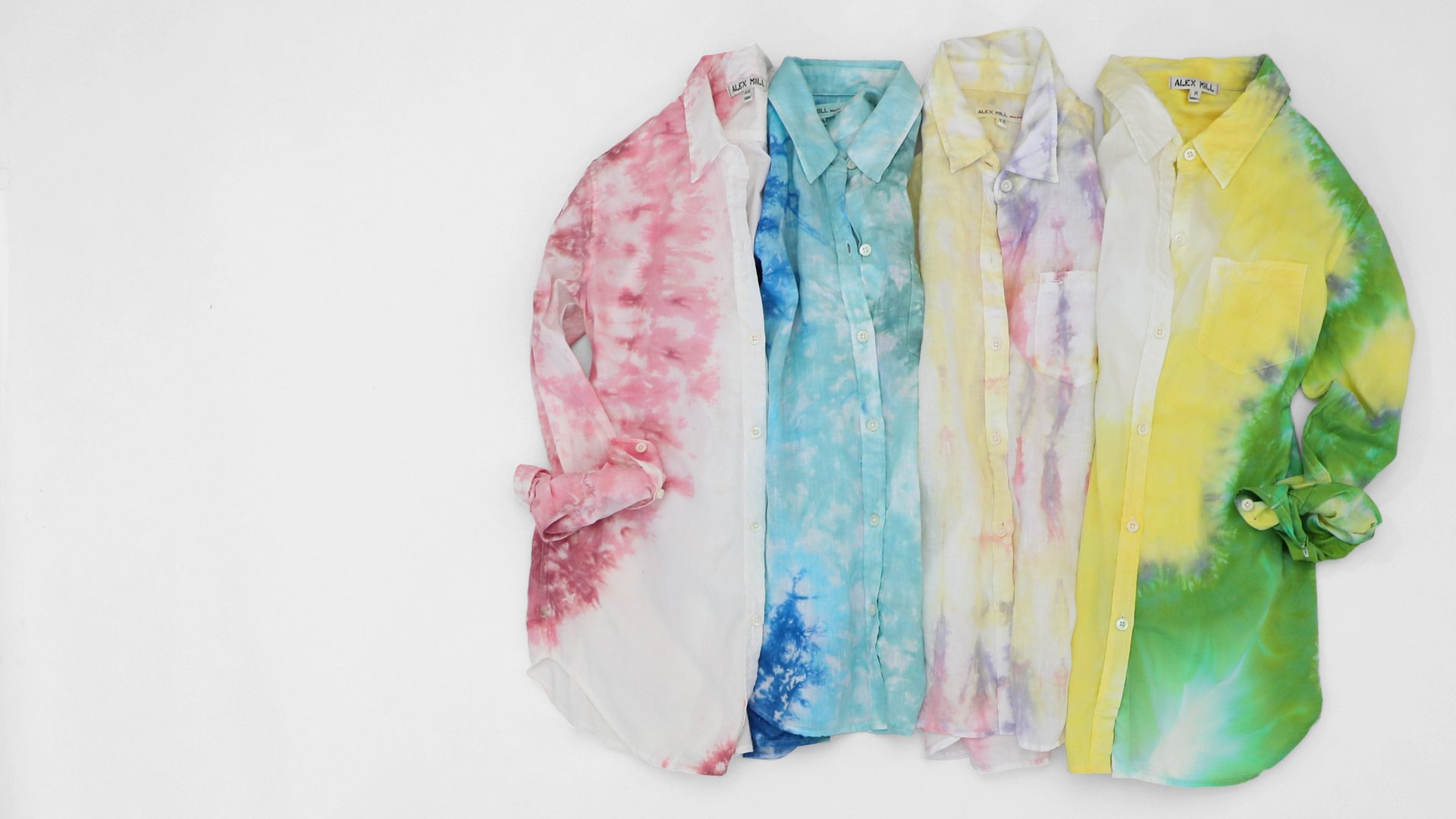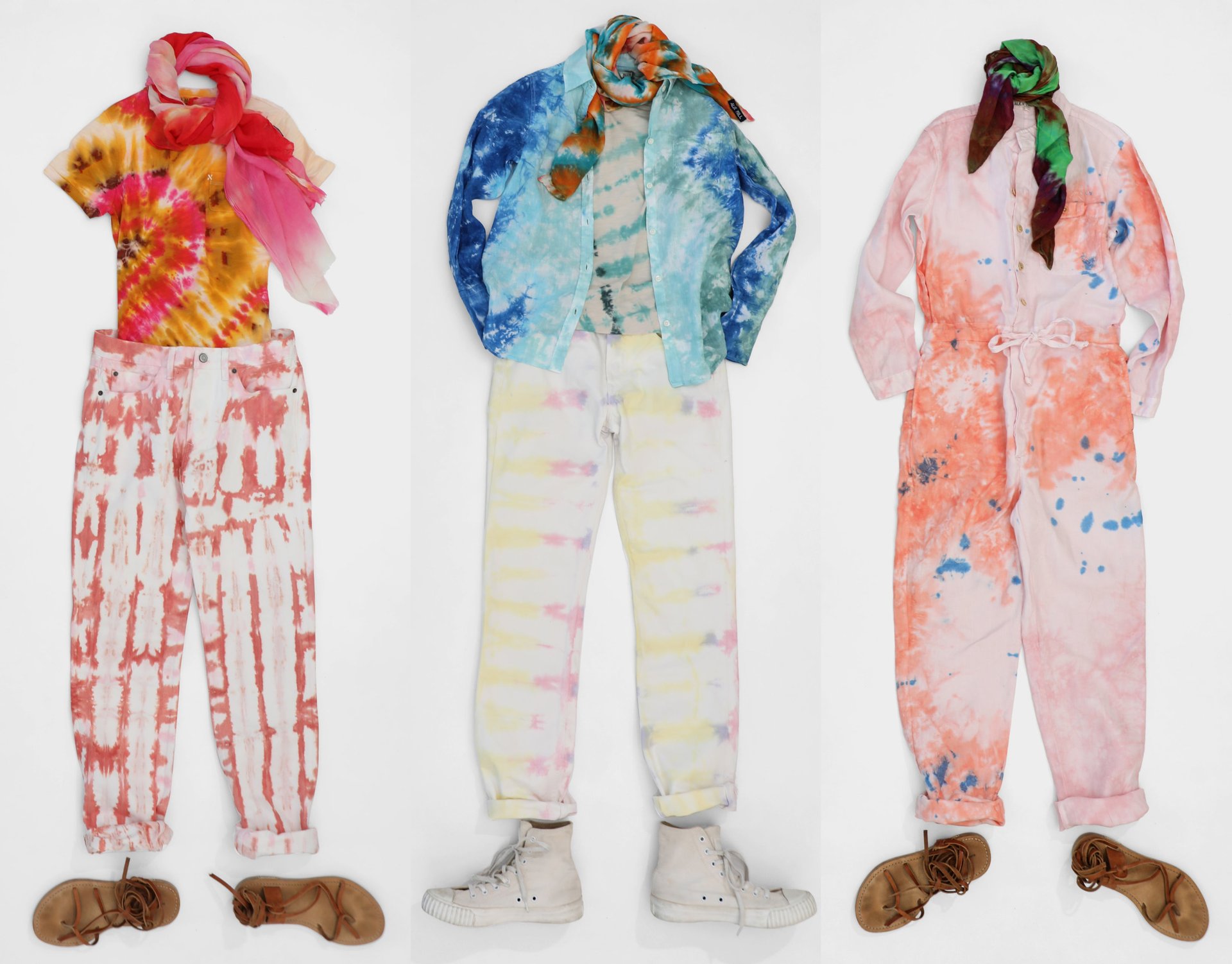The Covid-19 tie-dye boom is real
Last week, the New York-based fashion company Alex Mill, which traffics in trend-proof button-downs, chinos, and jumpsuits, launched a small collection of one-of-a-kind pieces tie dyed in shades of summer popsicles. Alex Mill’s creative director and cofounder Somsack Sikhounmuong said when it came to styling the collection for photographs, his first instinct was to pair the tie-dyed shirts and jackets with the brand’s solid-colored staples. Then, he had a better idea.


Last week, the New York-based fashion company Alex Mill, which traffics in trend-proof button-downs, chinos, and jumpsuits, launched a small collection of one-of-a-kind pieces tie dyed in shades of summer popsicles. Alex Mill’s creative director and cofounder Somsack Sikhounmuong said when it came to styling the collection for photographs, his first instinct was to pair the tie-dyed shirts and jackets with the brand’s solid-colored staples. Then, he had a better idea.
“Why don’t we just start piling tie dyes onto tie dyes, like tee-shirts with the shirts and the scarves?” he asked. “All the colors mixed together, all the patterns mixed together?” The kaleidoscopic styling made for compelling Instagram imagery, and Sikhounmuong said they sold 50 to 60 of the tie-dyed pieces on day one.
“In terms of a small capsule project, we haven’t done those kinds of numbers before,” he told Quartz. The web traffic also paid off in one of Alex Mill’s highest overall selling days of the season.
Nostalgic, cheerful, and sweatpants-friendly, tie dye has emerged as Covid-19’s winning fashion trend and DIY craft boom, all twisted, squeezed, and tied into one.

Google searches for “tie dye” usually climb a little in the summer, but they hit their all-time peak this year. There were 2.5 times more searches in August 2020 than the previous peak in July 2019 (with the debut of Starbucks’ tie-dye Frappucino). The global fashion search platform Lyst says users are searching for tie dye at nearly triple the rate of last summer, with Ralph Lauren sweatpants, Nike t-shirts, and Palm Angels hoodies topping the list of popular items, and tie-dye swimwear getting a 42% bump since June. And if you don’t want to buy your new tie dyes from those brands—or from Madewell, Asos, or LuluLemon, all of which are carrying them—you could just make them yourself. An Etsy representative says searches for DIY tie-dye kits have nearly tripled in volume, compared to the same time last year.
Jonathon Spagat, the creative director of Rit—the century-old dye manufacturer which became the tie dye of record in the 1960s—says Rit’s Indianapolis factory can’t produce dye fast enough to satisfy its customers. The company shut down its direct online sales after orders jumped an estimated 800% between April and July compared to the same period last year, to prioritize orders from retailers hungry for dye.
“It’s been a struggle. We are so in-demand and we just cannot keep up with it at all,” says Spagat, who estimates that Rit produces between 50,000 and 60,000 bottles of dye per day. “You can go to any Joann’s, Michael’s, or Target. Most likely the shelves will be empty.”
Spagat says the colors driving sales have shifted this summer. Last summer was all about black, charcoal, and navy. Now, everyone seems to be seeking optimism in the forms of aquamarine and rose quartz. “Our pinks have never done that well. All of a sudden they’re in the top 10,” says Spagat. Neutrals are also big and got a boost from Instagram influencer Danielle Bernstein, of @weworewhat, who showed her 2.5 million followers how to dye their own sweatsuits in April.
Some DIYers have found themselves with cottage industries on their hands. Shannon, a 23-year old accounting auditor behind the Instagram account @live_and_dye_la (who wishes to keep her surname private), wrote in a direct message that what started as a project for herself while stuck at home in Beverly Hills escalated when her 30-year-old sister wanted some pieces—and then her sister’s friends did too. Now, anyone can place an order through a Google form, and Shannon estimates she has sold 400 of her varied masks, hoodies and tees.
Nandita Khanna, who also lives in Los Angeles and is the content director for the CBD company Feals, started tie-dyeing last summer, and brought her hobby to new heights with the purchase of a dye kit from Upstate, an upscale line of hand-dyed textiles in March following stay-at-home orders.
“I was looking for something to do that wasn’t baking banana bread,” says Khanna with a laugh. She shared her exploits on Instagram, “as one does,” and soon her friends were DMing with requests. Khanna has since started selling $30 tees and $24 socks—just enough to cover the costs of materials and Upstate’s botanical dyes—in faded shades of rose and indigo, and just dyed a batch of bandanas for a local magazine’s pop-up store.
Trends aside, Khanna, Shannon, and Sikhounmuong all tout the mental health benefits of tie dyeing.
“In the way that someone might go for a run to clear their head, I actually find dyeing to be incredibly therapeutic,” says Khanna. “I’m someone who is always looking for order and seeking perfection in her life, and so this process has been really fun: deciding the colors, the randomness of it, and then actually how beautiful it can be in its imperfections … You don’t know exactly what you’re going to get when you unwrap it.”